Paradox of The Local: a phenomenological outline of the Ukrainian experience
In this essay the Ukrainian philosopher Volodymyr Prykhodko puts forward his concept of the structure of memory. He applies this concept in an analysis of the intellectual and imperial detachment as it exists within the Russian director Illya Khrzhanovsky’s works focussing on Ukraine.
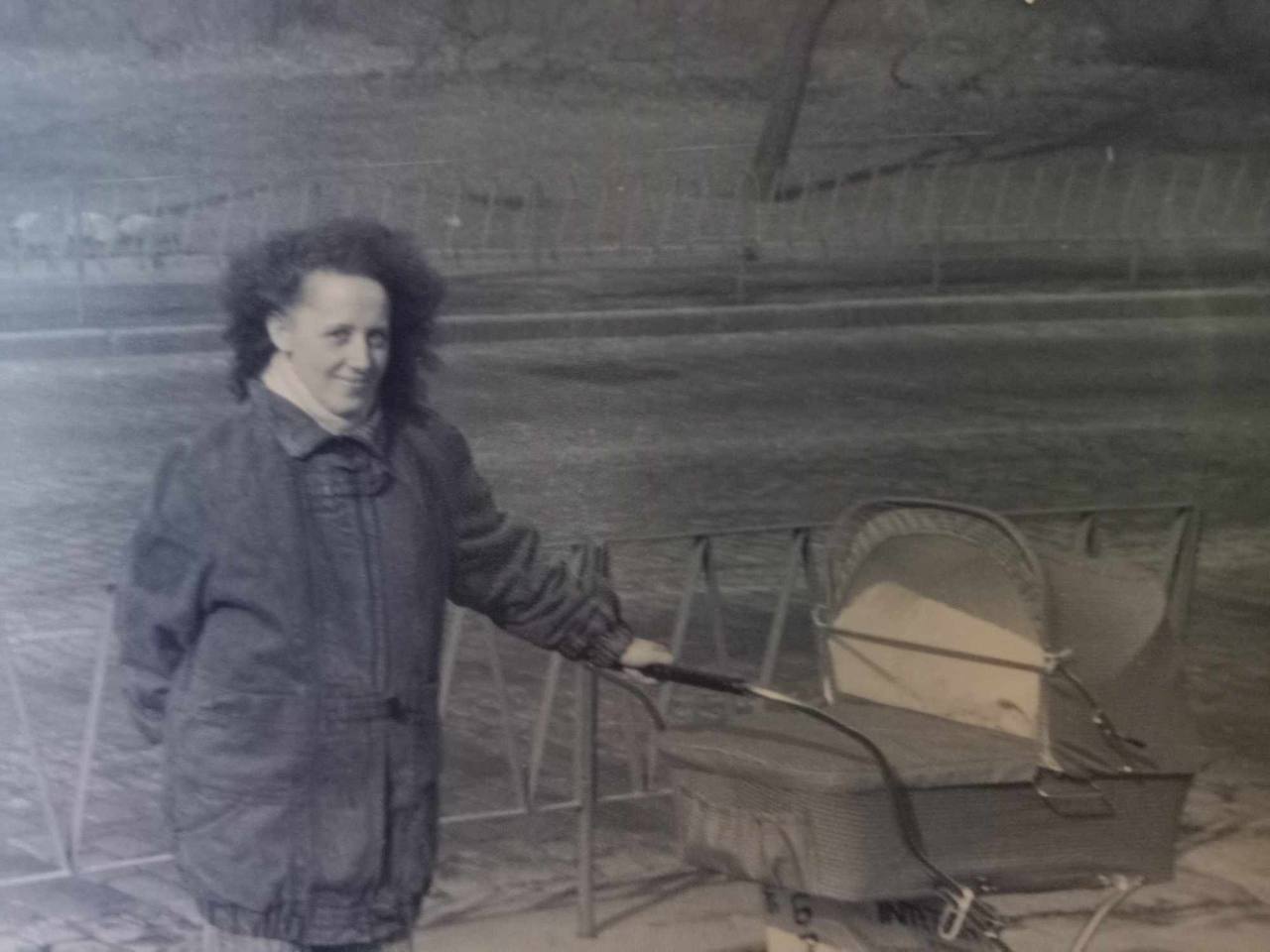
For me as a Ukrainian, talking about Ukraine is both easy and difficult. The experience of talking about Ukraine is like air: you only notice it when you do not have enough of it. But this is only the tip of the iceberg of the problem, as many texts have been written about Ukraine and one can form an idea about it based on these. This raises the question: what can the experience of a Ukrainian add to the cautious distance of encyclopaedic knowledge, to the indifferent pigeonhole of erudition? Here one senses the gap between scientific history and one’s own narrative, between objective logic and subjective memory, between information and existence, between concept and life…
Put simply, the question is: what can I offer to the foreigner, to the Other, aside from what belongs only to me? This is the paradox of the local… The answer, however, is no less paradoxical — to give away one’s own foreignness, thus disrupting the space of stereotypical unequivocalness, of the indifferent neutrality of the observer. How can this be done? And is it even possible? It is to answer a number of these questions that I am writing this essay, not only to recall Ukraine once again, but to share with people from other countries the experience of my own “being-in-the-world-in-Ukraine”.
Method
In my opinion, it makes no sense to refer in my essay to definitions, to historical facts in order to present the formal contours of Ukraine: state features, significant historical events and people who carried them out, the state of the economy, law, education, etc. If you search well in the bibliographical space, you will certainly find a symbolic place for all these things. However, put together in this way, Ukraine is nothing more than a symbolic construct, far removed from what happens here on earth, in the ordinary everyday life of people, filled with experiences from being in the world, overflowing with feelings that make up the mood in every physical movement, unfolding the background feeling of well-being when we see our own place in the world and call it Ukraine. Therefore, the method must search for existential places depicted on the memory map. We will pursue a philosophical topography by conducting a spatial and phenomenological research not only on Ukraine, but on the Ukrainian experience that is formed in the complex interaction of corporeality and the world through the mediation of existential memory…
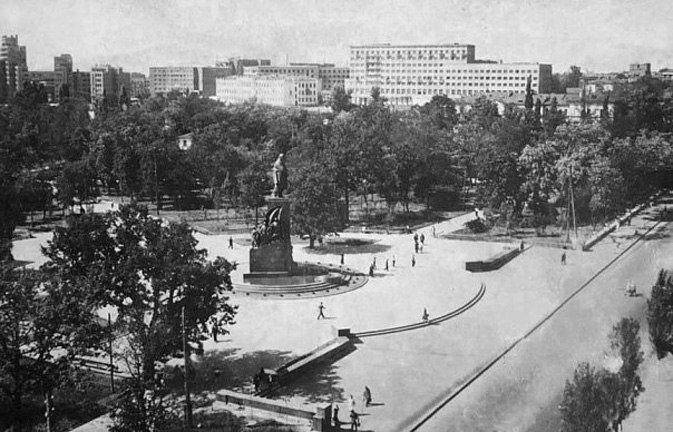
Existential memory
There are many types of memory. Let us first name them to distinguish their mode of expression of connection with the world: a) passive, b) active and c) medial. This is the most comprehensive criterion for differentiation. Since each group can encompass a whole range of other types, we do not need precision here, but it is important to begin the path of clarifying the necessary outlines of existential memory. The first thing we can establish is the basic criterion of this most general subdivision: memory always records an event that is roughly captured by structures of tradition, of transmission, which in this respect are based on the iterative, repetitive nature of time. An event is captured and becomes itself only when it is given the place indicated by the traces in order to be repeated but not replaced. What is the fundamental difference between the forms of remembering?
а) Passive memory comprises a group of variants that are inaccessible to control by the reflection of their bearers and have an ultimate character: genetic memory, traumatic-psychic memory, imprints (the so-called mechanical memory) are a striking example. Clifford Geirtz wrote beautifully about genetic memory and its difference to cultural analogues in his anthropological essays ‘The Interpretation of Cultures’ where he compared the dams of beavers and humans. The beaver relies on natural internal ‘structures of something’, while the human mind relies on the systemically acquired external cultural knowledge of ‘structures for something’. This implies a goal in mind, the results of which are constantly available for reflective correction. The dam-building event thus shows the difference between the beaver and the human, as they have different locations assigned by memory.
Thus we live on the same planet, but in different spaces. With regard to traumatic memory, one must remember Sigmund Freud and his attention to memories as sudden images as opposed to memory images that can be deliberately evoked. Our mental life is full of sudden images that are our psyche’s reaction to traumatic and upsetting events, so much so that they can constantly come back to us obsessively, which is the essence of neurosis. Therapy here is a complex process of bringing another person’s guidance from the psychiatrist’s side into the space of one’s own existence. As far as mechanical memory is concerned, we can say that it is inherent in biological species and has cerebral traces of use. We remember space and the things in it as an existential path. In this sense, horses or elephants, for example, have a phenomenal memory. One can develop the ability to remember the position of things in an environment using mnemonics, but this does not involve any active processes surrounding exactly what is selected for memorization. Another method of passive memory is now emerging as artificial technical corporeality permeates modern culture —events are encoded through programming, which is reflected in human existence, which is reflected in human existence. One example is in the form of visual dyslexia, which Paul Virilio explains in “The Vision Machine”.
b) Active memory, of course, has the opposite way of capturing events than those mentioned above. Here there is a wide range of strategies and corresponding tactics for actively working to locate the event. First of all, we can clearly state that all these practices relate to the cultural life of a person and are nurtured in culture even as spiritual substance, since this is where the idealisation of the cultural condition takes place. This condition acquires an absolute significance which can be expressed by saying that we are able to shape our own destiny, collectively and individually, that we are given the means to do so. All ethical teachings aim at success through the acquisition of a place in culture — the acquisition of a moral identity.
Such an identity makes it possible to grasp events as actions through the symbolic code of “good/evil”. In general, one cannot exist in a culture without identity. In any field — be it politics, religion or science — wherever sign systems operate, we find our place to grasp events and transmit them in the theoretical tradition we have learned. Secondly, as already mentioned, there are different strategies for perceiving events, or rationality. Within different rationalities, we get different events because the ways they are remembered are different. Within rationality, active memory can include the following varieties: emphasis, construction, substitution.
Emphasis (annunciation) implements an active memory strategy by emphasising a particular event or series of events as central, which requires their constant mention. It is the creation of a kind of reference point (primary zones) for the ability to navigate historical realities. The most vivid manifestation of this rationalisation of memory for every christian is the Creed; the shared belief in the event of Christ’s crucifixion and ascension. This symbol of faith should ideally be articulated by the believer every day in order to recreate the Christian’s religious identity.
Construction assumes that an event is the result of an assumption based on a certain knowledge of the world. Simply put, it happened because it could not not happen. The political, scientific and social realm is less filled with real events than with assumptions that themselves become events. Therefore, the only criterion for their validity here is proof and conviction based on argument. A key example of this is the diversity of gender identities, which demonstrate that the constant emphasis exclusively on male and female, inherent in emphasis-memory,is not decisive in construction-memory. The issue here instead is the conviction that you are who you think you are. In this process, the creation of personal rituals of affirmation is central, these affirmations, usually having a scientific origin taken from the discourse of the humanities.
Substitution (supplementation) is a particular kind of memory that radically replaces one perceived event with another, while denying the difference between the two. Substitution is a confused memory in which confusion is the main form of representation of an event. If emphasis-memory involves clarity and authority and construction-memory involves persuasiveness and independence, substitution deals with weakness, vagueness, and half-heartedness. By simplifying the process of identification through this vagueness, the impression of completeness and omniscience is created. The appeal of substitution is the sense of belonging to a certain greatness. Substitution combines emphasis and construction. Mass-appeal, usefulness and popularity are the main characteristics of supplementation, avoiding the complex tests of active memory in the case of announcement and construction associated with various ritual acts, such as public movements, conferences, and cultural events which affirm identity. Substitution promotes conformity, neutrality and indifference, thus simplifying one’s grasp of an event, since perception itself becomes unimportant.
An example of different dominant rationalities in active memory is modern Ukrainian and Russian culture. In Ukraine, I think there is a distinct emphasis when different communities are looking for defining reference points: the Revolution of Dignity; the seizure of Crimea and parts of Donbas; the beginning of the full-scale Russian invasion; the death of relatives and friends; emigration; occupation; religious and secular holidays. In addition, people now increasingly perceive the Ukrainian and Russian languages no longer as being equal, since the Ukrainian language itself has become a reference ritual, as evidenced by the transition of many Russian speakers to Ukrainian even in ordinary communication.
In the Russian Federation, I observe an increasing strengthening of substitution, which is a continuation of the policy of creating the ‘Soviet man’ and ‘Soviet internationalism’. in the USSR. One sees the neglect of cultural and ethnic diversity, the labelling of everyone as ‘russki’, even if one is Buryat, the creation of an average ‘Russian’. An indicator of this is the widespread statist identity, through whichthe inhabitants of the Russian Federation see themselves only in the vortex of reproducing a strong state. Ideology as the chosen strategy of active memory in the state is based on the blurring of borders, for example between the Russian Empire and the Soviet Union, between the countries of the West and Nazi Germany, and between an attack on another country and the defence of the homeland.
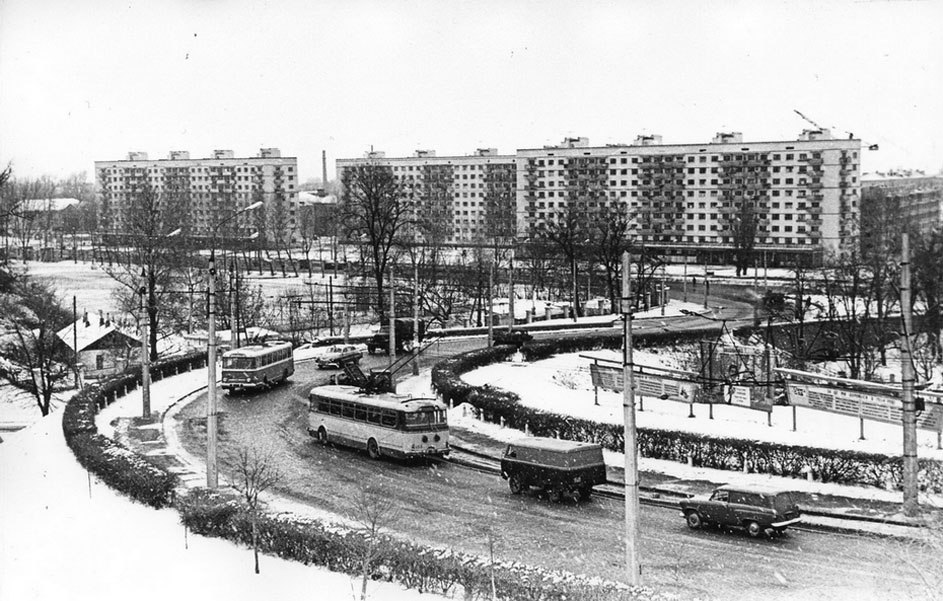
c) Medial memory represents a complex interplay of managed and unmanaged moments in the capturing of an event. Through this process, the event is stratified into background and foreground. This duality is essential. It deals with a boundary phenomenon where something is presented alongside alternatives or as something different. The boundary leads to a network that expresses difference. To illustrate the uniqueness of medial memory, several telling examples should be provided.
The first example concerns the conflict between individual (psychic) memory, and collective memory. This conflict is explored in Maurice Halbwach’s writings on Freud’s teachings on memory. The main accusation is that in Freud’s work, the human psyche with its traumatic experience appears isolated from social structures. According to Freud, the memory of trauma results from the autonomous functioning of the human body, and from there it is projected onto social life, which seems to have no memory of its own and instead influenced by individual, psychic memory. Instead, Halbwachs’ central thesis is the assertion of the existence of a collective (social) memory that influences every individual behavioural trajectory through the rules of dealing with time and space. The collective memory is a network that organises the psychic life of the individual in the same way.
According to Halbwachs, the isolation of the individual and their memory in psychology is not acceptable: the individual must exist within a specific area with its own social coordinates. In my opinion, the dispute arises here because Freud’s teachings are dedicated to passive memory, while Halbwachs speaks of medial memory, which treats events as a part of a social spatial network. Simply put, trauma forces us to act, and we cannot resist it. The space that trauma represents is closed to us, even whilst it gives us certain agility through vulnerability. In contrast, events of the social space regulate our behaviour, whilst also allowing for the engagement of the actors in the network, thus allowing us to act within it.
The second example also comes from Halbwachs. He questions whether we can speak of historical memory as a separate kind of memory. The answer here is also unsatisfactory: we can only speak of historical memory metaphorically, because history is the struggle of different systems of thought for the power that gives them truth, and collective memory cannot serve private interests. It is obvious that here we observe the difference between medial and active memory. Again, events captured by active memory can change depending on the prevailing symbolic systems. In general, Ukraine has become a model space for such changes. One example can be seen in the so-called Leninopad (Lenin-fall), when the monuments to the ‘leader of the proletariat’ were destroyed. In this context, the process of decommunisation, through which the symbols of the criminal Soviet regime are erased, must also be mentioned more broadly. This also includes the creation of new toponyms, monuments and memorials. The promotion of narratives around the colonial legacy, reinforced by the unprecedented invasion of Ukraine by Russian forces, has led to the ’derussification’ of space. This involves the dismantling of monuments to figures of Russian culture and the banning of references to Russian-language literature in academic work.
(In this context, the idea of Ukraine as a former Russian colony, is, in my opinion, greatly exaggerated. Whilst the attack on Ukraine is obviously of a colonial nature from the side of the Russian Federation, then from the point of view of Ukraine it is the restoration of its true indigenous”, so to speak, place and status among European nations. That is to say that we were never conquered, but instead were part of various alliances, even though these unions often had negative consequences for us. For example, we were a part of an alliance within the Polish-Lithuanian Commonwealth. Similarly, the Pereiaslav Agreement concluded by Bohdan Khmelnitsky brought us closer to Musovy. The same could be said for the Soviet Union. The Cossack phenomenon is in itself noteworthy! Not to mention the cultural, artistic and scientific expansion from the territory of Ukraine, which continued constantly, in different languages, for different cultures. This already contradicts the notion of poverty and neglect.
To return to the main thread of discussion, we can say that historical memory is too volatile to be a memory in Halbwachs’ sense, even if the substitution presents itself as a collective memory by creating an aura of ‘naturalness’, or unconstructedness. Therefore, medial memory should open up the network space of relationships for its navigational understanding. Medial memory also has various forms, including the aforementioned collective (social), the cultural and finally the existential. For us, it is the latter that is at the centre of the conversation about the Ukrainian experience. So, why do collective and cultural memory not suffice so well? The difference lies in the status of the Other, which forms a network that creates a space for this practice. As previously mentioned, medial memory has a double character due to the presence of the Other, which brings with it the experience of separation as the use of difference for communication. We share experiences, and this sharing involves distribution of those experiences as well as the the communication and transmission of them. For example, we can share with someone the pain of their or our loss, or the success in some business or the impressions of a performance. The status of the Other, which is important for the differentiation of medial memory, depends on the degree of tension of the situation, which belongs to the hierarchy of experiences that contain ‘attention to life’ (the term used by Henri Bergson in his work Matter and Memory to denote the world hierarchy from the inanimate to the spiritual; a term also actively used by Alfred Schütz to designate the hierarchy of worlds in his concept). Here, I follow the Austrian-American phenomenologist and also emphasise that the primary level in the hierarchy of medial memory is existential memory, the middle level is collective memory and the highest level is cultural memory. But what does this mean?
First, this indicates that the failure to resolve the problems of existential memory threatens existence itself. It leads to a break with the life that is available to us through the experience of the world. There is no such direct threat on other levels, although they are undeniably intertwined into life. A crisis of action and a crisis of linguistic expression leads to a reexamination of one’s position in the world, but a crisis in experiencing the world brings states of apathy and depression, and a withdrawal from the world and its events.
Secondly, as seen in Schütz’s work, the central place for existential memory embraces corporeality with its triad of experience — tactile, visual and audial. At this level, the focus is on the sense of touch, with the atmospheric senses of smell and taste added. It is the skin that weaves the primary web of the world screen on which all phenomena manifest themselves. Thus, we begin to distinguish something, as Maurice Merleau-Ponty wrote in his essay Eye and Mind using the example of art (and for good reason!). He explains that the artist projects their skin as a canvas, so that in the folds of this bodily tissue the world reveals itself in its own diversity. In the same way, we discover ourselves, our own primary identity, by wrapping ourselves in the skin and at the same time mastering the world, as the French psychoanalyst Didier Anzieu wrote in his work The Skin Ego.
Thirdly, other levels of memory also have their basis in physicality — in the case of collective memory the focus is on visual experience, whilst in the case of cultural memory on auditory experience. However, this does not mean that the bodily integrity of the experience falls apart. For each of these existential bodily experiences is connected with others in a bodily schema and finds its realisation in the gesture, as Merleau-Ponty emphasises.
However, it is worthwhile to understand that corporeality is not reduced to a physical individual body, but is an agent of the world network, and this means the impossibility of existence without connection with others — with things, bodies, oneself. Thus, the identity of existential memory is the grasping of events through senses; actions are absorbed at the level of collective memory, while cultural memory provides meaning for recording of events. We can speak of existential memory because it deals with feelings in order to unfold a network of differences. It is therefore about the formation of an aesthetic space in which the bodily-existential art of designing places operates that is, the practice of orienting oneself. What kind of art is this?
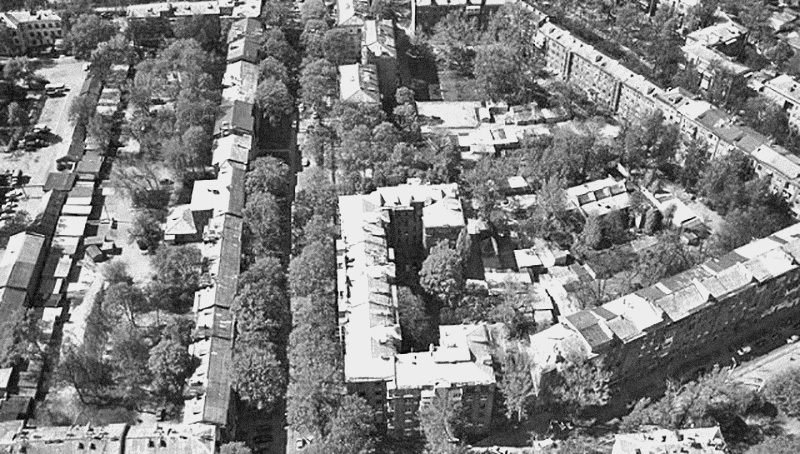
Bodily-existential art
Memory as the retention of an event through working with time and space makes us part of the world, giving us a place and an identity. However, it is existential memory that keeps us in the world that is life and offers various aesthetic practices of anchoring in it. Identity unfolds here not consciously or semi-consciously, but unconsciously, but not exclusively passively (as in genetic memory). As Maurice Merleau-Ponty beautifully revealed in his work Phenomenology of Perception, corporeality has a double dynamic essence, its own practical intentionality. This is why the French phenomenologist is considered one of the leading theorists of art: he insists that art itself is a prime area for revealing the creative potential of corporality. This is the thesis of his work Eye and Spirit, which is the most powerful philosophical exploration of artistic realisation of human existence [1]. Merleau-Ponty speaks of abstract, conceptual art based on the play of cultural codes, on their violation, in contrast to the preferred artistic colorism of Paul Cézanne with his color modulations, which Merleau-Ponty so revered and considered paradigmatic for the human bodily experience. I therefore specify that it is bodily-existential art that underlies the primary existential experience of life or bodily existence in the world.
However, it is also worth emphasising that the unconscious activity of corporeality, which is attributed to one’s own body (le corps propre) on the basis of style: bodily creativity is individualised not by consciousness, but by style. Walk, habits, manner of holding, emotionality, taste say more about one’s place in the world than our narratives about ourselves, where most descriptions are borrowed from cultural patterns. Here we can observe the difference between the levels of medial memory, but already at the level of artistic practices, abstract and existential.
The distinction between abstract and existential art is best illustrated by the way in which art fills all three levels of media memory. The polemic between Jean-Paul Sartre and Roland Barthes regarding their understandings of literature clearly shows the difference between the mechanisms of cultural and collective memory. The essence of literature manifests itself in the identity of the author.
For Sartre, literature is the sphere of the realisation of the writer’s political engagement. Therefore, Sartre’s concept of engagement aims to demonstrate the duality of the author’s existence through the concept of responsibility as political action. In this respect, literature, through the author, opens up a network of activity relations of action and strengthens collective memory: the author represents collective power, but responsibility points to a role within it. Whether we like it or not, we all unconsciously represent political forces distributed along certain lines, which leads to conflicts of inequality, but this does not absolve us of responsibility in social action, because we derive the power of social transformation from this political field in which we find ourselves. This realisation opens up the collective memory. And literature makes an important contribution to this. Practically all writers are creators of a collective identity, whether they want it or not, whether they deny it or not, whether they ignore it or not.
Things look different for Barthes. In his essay ‘Writers and Authors’, the French structuralist says that the writer shares a common destiny with language and that it is language that guides him as a social institution. This is an example of a cultural memory that is linguistic through and through. Simply put, the writer is an agent of the linguistic network, and therefore only he has access to linguistic creativity and the expansion of its possibilities. The writer is not a man of action (Sartre) who involves action with its political commitment, but a man of words whose humanity dissolves in the functional power of the language system. Despite everything, the writer remains faithful to language. Of course, everyone else uses language, but only for their own purposes, which lie outside the linguistic world. Barthes even complains that the shelter for such language users is created in the universities, ironically alluding to the representatives of the humanities faculties.
The polemic between Sartre and Barthes thus shows the complexity of the phenomenon of art using the example of literature, which is simultaneously social and linguistic, implying different levels of memory involved in the formation of identities. But that is not all. Both Sartre and Barthes have a certain aversion to poetry, especially lyric poetry, because it is narratively impoverished compared to prose, the result of a simple action that is constantly and unalterably repeated. And it can be expressed in a single sentence: “I love you”. This simplicity, however, opens up the world of physical-existential art. For a poem should not only be written and read, but should resound in the rhythm and modulation of the voice, which identifies poetry as an important area of auditory experience. The poet is thus an expression of the power of life itself.
An even more striking example of bodily-existential art is painting. Why is that so? Merleau-Ponty says of visual experience that it is created not for words but for light: The artist’s modulations of colour demonstrate the emergence of the world with its multiplicity of images as it gradually breaks through from the dense dark density of “wild being” (Merleau-Ponty’s term, French être sauvage) to the light that shines upon us, and we begin to perceive the outlines of places and things. In this way, the invisible becomes visible. In other words, the artist opens up the visual-sensory network of the world itself, becoming an accomplice to the existential-ontological event of the birth of vision, which is fixed by his corporeality in the identity of the style. This also includes the manner of painting, the “flight of the brush in the hand”, which becomes a gesture that indicates this event.
Our final step in the description of bodily-existential art is the thesis that our ordinary everyday life is full of such art. And the only thing that separates it from the “art of artists” is its focus on the search for novelty; everydayness is supposed to grasp life in its main corporeal characteristic — renewal. At first glance, this thesis appears quite contradictory, as everyday life is comprehensively routine and permeated by habits. However, they conceal a strange answer: without at least minor deviations from norms and rules, habits are not grasped as vital. Put simply: the exceptions make the rule. Every morning cup of coffee is different if you have a taste (taste does not so much belong to the tongue, as it is the aesthetic aura of our existence). A lack of taste is a sign of a lack of pleasure in life. Illness, mental exhaustion and stress lead to a radical narrowing of bodily experience, to apathy and depression. Man cannot live without feeling the flow in which he is involved, the life force. If man feels repetition and not novelty, he falls into the pernicious fatalism of the completion of life. In this way, everydayness is a bodily-existential art of living on, which captures the events of renewal in the routine (and thus in the medial and existential memory), giving flavour to every moment of our existence.
We must therefore return to the initial questions.
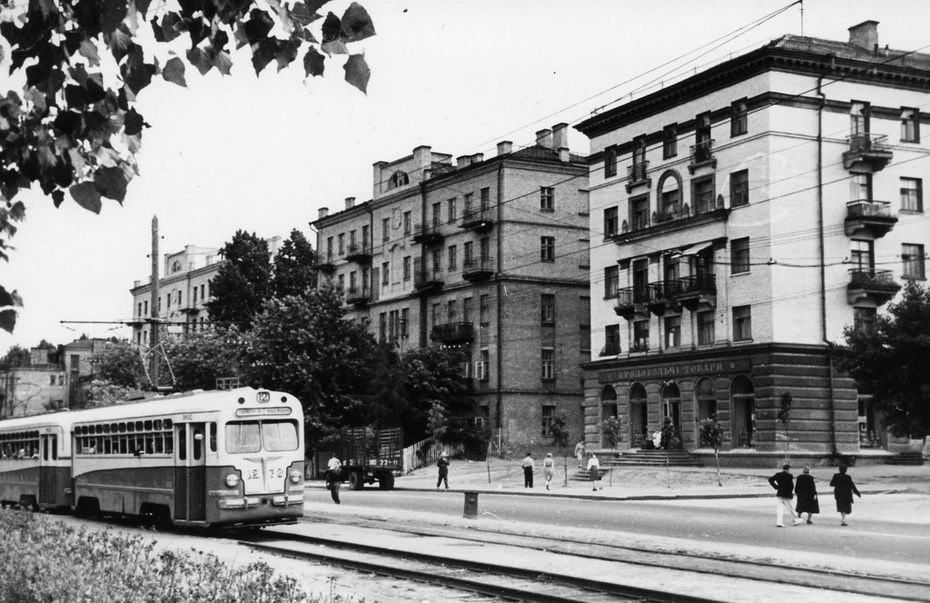
Ukrainian experience
Let us recall the questions posed to us at the beginning of this essay, after it was emphasised that we can only offer the foreigner (the Other) our own otherness, since platitudes are worthless. This begs the question, how should one offer this otherness? And crucially, is it even possible?
It is worth adding explanatory remarks here, because a large part of this essay is devoted to memory and art, and to the relationship between them, which is what allows humanity to exist. Memory is the ability to grasp the situation in the world of events. This ability does not belong to (individual or collective) consciousness, but to the world itself, which is realised through spatio-temporal practices that are initially exclusively bodily, which form identity as a place of encounter with events. This is why the world has a structure based on real situational possibilities that do not anticipate events a priori. In this respect, art is precisely a set of temporal-spatial practices that are organised according to situations that are initially exclusively corporeal and that create places for the perception of world events.
A positive answer to the questions posed above is well illustrated by Merleau-Ponty’s comparison of art to metemsomatosis, which is to say the transmigration of bodies, when the artist seems to enable others to put on their own skin for sensory perception of the world. In this way, we can explain the sharing of personal experience with others on a bodily-existential level, which is symbolically captured in Christianity through communion.
Before I turn directly to the Ukrainian experience, I would like to emphasise that there are no definitive definitions, but that this experience manifests itself in hotly debated events that extend into everyday life. I have chosen to use as an example a situation that emerged around an artistic project, which directly dealt with connection between memory and art, as well as the differences in the existential experience of Ukrainians and Russians. This project consequently received a large amount of negative publicity within Ukrainian society, whilst simultaneously being well-received in other European countries, even being awarded prizes. I am referring to the Russian artist Ilya Khrzhanovsky’s film project ‘DAU’.
A. ‘DAU’ – not our project
DAU [2] was a grand cinematic project, which received accolades within the artist community as being refined and multidimensional from the perspective of the symbolic constructs embedded within it. As Khrzhanovsky himself said, the centre point is the death of ‘Sovok’ [3] and more broadly the remnants of Soviet culture; here is the idea of using art as a time machine; here is the architectural design which is so embedded Kharkiv modernism; here is the social experiment with non-professional actors from various social groups improvising under given historical conditions, and so on. However, what stands out to me is the director’s attempt to control space and time, primarily through the selection of an epochal framework (where? and when?), which, through the actors as its agents, elicited certain behaviours: time and space themselves wrote the plot lines. Yet, in Ukrainian society, this provoked a sense of repulsion.
The reasons for this lack of perception, in my opinion, do not lie in the realm of intellectual incomprehensibility, but at the level of existential experience, without which one cannot reach the level of abstract understanding. The biggest problem is the choice of place and time. What the artist has chosen as the most important thing turns out to be a failure of depiction of Ukraine. Setting the film in the Ukrainian city of Kharkiv during the rule of the NKVD evokes feelings of fear and horror that cannot be abstracted. Why is this? Kharkiv at that time was a city of the dead. Starving people sprawled like a sea over the streets, in particular near to the train station. Tens of thousands of abandoned children, dying silently because of the indifference of the city’s inhabitants These children had been sent by doomed parents from the surrounding villages in the vain hope that in the city their little ones would be saved. Kharkiv was the capital of the Holodomor, permeated by the stench of death and decaying bodies. Returning there, even if inspired by art, is violence against Ukrainians, full as they [we?] are of existential memories. Moreover, it reveals the imperial Soviet discourse in all its splendour, where the majesty of ideas deceives life, and where memory is the same artificial symbolic project imposed by ideology. In this respect, this project is reminiscent of chronicles from the gas chambers. Even those Ukrainians who did not experience the Holodomor feel this deep sorrow, which is why it is important for a Ukrainian to always have a large amount and range of food on the table. This ’gluttony’ makes us hospitable; offering food is like a law.
Alongside the Holodomor victims there are also other dead — the betrayed cultural elite of the first Soviet capital of Ukraine: writers, poets, playwrights, actors and others. Just think of the Ukrainian avant-garde, or the Berezil’ theatre of Les Kurbas. This whole community died in the Gulag on the Solovki Islands. Hence the sense of betrayal that simmered and flared in Ukrainians during the Soviet period, and the inability to fully understand what was being said from Moscow. This was a ‘bloody’ pill, an existential inoculation against the authorities. Ukrainians do not fully trust the authorities, and consequently they rely more on rumours, on the life stories of others, on existential experiences, than on good words. What a friend, a neighbour, a colleague says is more important than the authorities. In this respect, DAU brings back the traumatic experience of the stolen future, and is a sharp attack on Ukrainian culture carried out by the Soviet authorities with the help of the Russian language, which bleeds the Ukrainian city of Kharkiv dry.
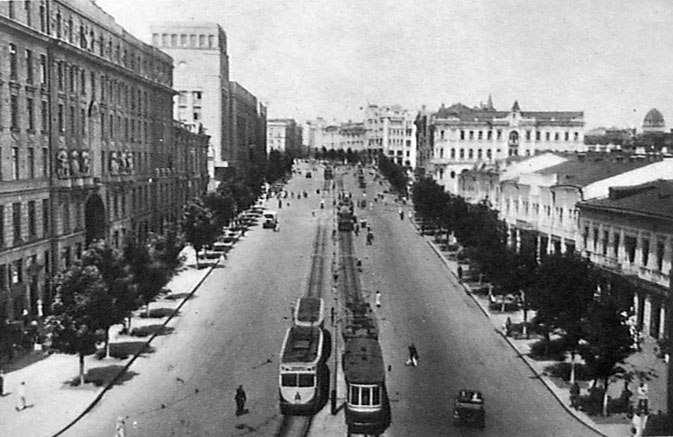
B. The stolen memory of Babyn Yar
Another telling example of the rejection of the artistic realisation of abstract Russian ideas in Ukraine is the Babyn Yar Memorial Centre [4], which Ilya Khrzhanovsky was also involved with. The very presence of the memorial centre directly points to remembrance. The complex symbolic project, which included the interactive participation of the viewer, was to become a universal embodiment of mourning and an unforgettable event for every visitor. Kyiv was supposed to become a centre of global Holocaust commemoration. So what went wrong? Why was there a wave of outrage? It should be noted that this had nothing to do with antisemitism, with even Kyiv’s Jewish communities responding coolly to the project. As in the previous case of Kharkiv’s ‘DAU’, the answer lies in the disregard for the existential memory of Ukrainians, and especially of Kyiv residents.
The extermination of people in Babyn Yar is a tragedy which concerns above all else the people of the city of Kyiv. This takes precedence over any abstractly symbolic, albeit universal, understanding of the Holocaust. This is not because the suffering of the Jewish people isn’t worth discussing, but because this tragedy befell in particular the Jewish Kyivans who were betrayed by the Soviet authorities – those same Kyivans who kept the area of Jewish Podil alive. Alongside its residence, that area vanished forever. Abandoned by the Soviet authorities in the face of Nazi invasion, the Jews of Podil were also betrayed for the second time when the tragedy of Babyn Yar was covered up by the official authorities for a long time after the city’s liberation.
Secretly, the shared stories of the horrors they had experienced among themselves. That is, the first thing the authors of the project overlooked was the direct connection between Kyiv and Babyn Yar: that Babyn Yar is a Kyiv toponym linked to the memory of its inhabitants, and not just an abstract symbol meant for global recognition, like the Eiffel Tower. For the people of Kyiv, Babyn Yar is not only a place of burial, but also a site where a crime was hidden. Kyiv’s ravines are existential hiding places — deep and steep, where rubbish and all other manner of refuse can be thrown, and where people, along with their fates and their stories can themselves be concealed, as though they were a part of this refuse. And that’s just the beginning!
Secondly, to separate Babyn Yar from Kyiv means to erase it from the map as the capital of Ukraine, where people of many ethnic groups lived. This means that we should not forget that Babyn Yar is a mass grave not only for Jews, but also for Roma, Ukrainians, Russians and others — a crime against all of humanity was committed here. That is why the Holocaust should be placed in the international context of human tragedy, not the other way around. This is also about the living memory of the witnesses. In the case of Kyiv, the Holocaust was concealed for a long time, and was preserved mostly in the existential and collective memory Kyiv citizens and only later was this memory returned to the Jewish people globally.
Thirdly, Khrzhanovsky’s memorial project ignores the post-war history of the city of Kyiv from the capital of the Ukrainian SSR to the capital of an independent country, which covered the Babyn Yar area with its layers. At the beginning of the 1960s, a brick factory’s dam burst in this area, the retention basin of which, filled as it was with water and sludge, was located at the site of the mass graves. An almost twenty-metre wave destroyed the neighbouring Kurenivka district. Thousands of people died. We still lack complete documentation of the ‘Kureniv tragedy’. No one still knows exactly how many people died. The ‘curse’ of concealment in action again! However, this area cannot be perceived without a new Soviet tragedy. The destinies of those who died during the war and those who survived it were intertwined in the latest tragedy of Babyn Yar. And this can no longer be neglected either.
Finally, independent Ukraine has marked itself on the map of Kyiv by naming the main avenue along Babyn Yar after Olena Teliha, a Ukrainian poet and nationalist who fought for Ukraine’s independence from the USSR [and who was killed in Babyn Yar]. The disregard of contemporary toponyms in favour of an abstract idea is manifested as a contradiction between existential memory and an ideology which avoids looking into situations and circumstances in favour of simplistic solutions. Simply put, a Ukrainian citizen walking along Olena Teliha Avenue perceives Babyn Yar as a tragedy for the Ukrainian people. For this reason, the abstract nature of the memorial project was perceived as a theft of memory, space, history and life.
The Russian Federation’s attack on Ukraine has only confirmed the truths of the Ukrainian existential experiences. The Russians, ideologically obsessed with fanciful grandeur, surrendered their existential experiences for symbolic constructions. Their reenactment game has turned into a tragedy for humanity. Unfortunately, this also involves art, which ignores life and is based only on complex intellectual constructs. ‘DAU’ and Khrzhanovsky’s memorial project at Babyn Yar are a vivid illustration of this state of affairs, despite the artist’s disillusionment with Russia.
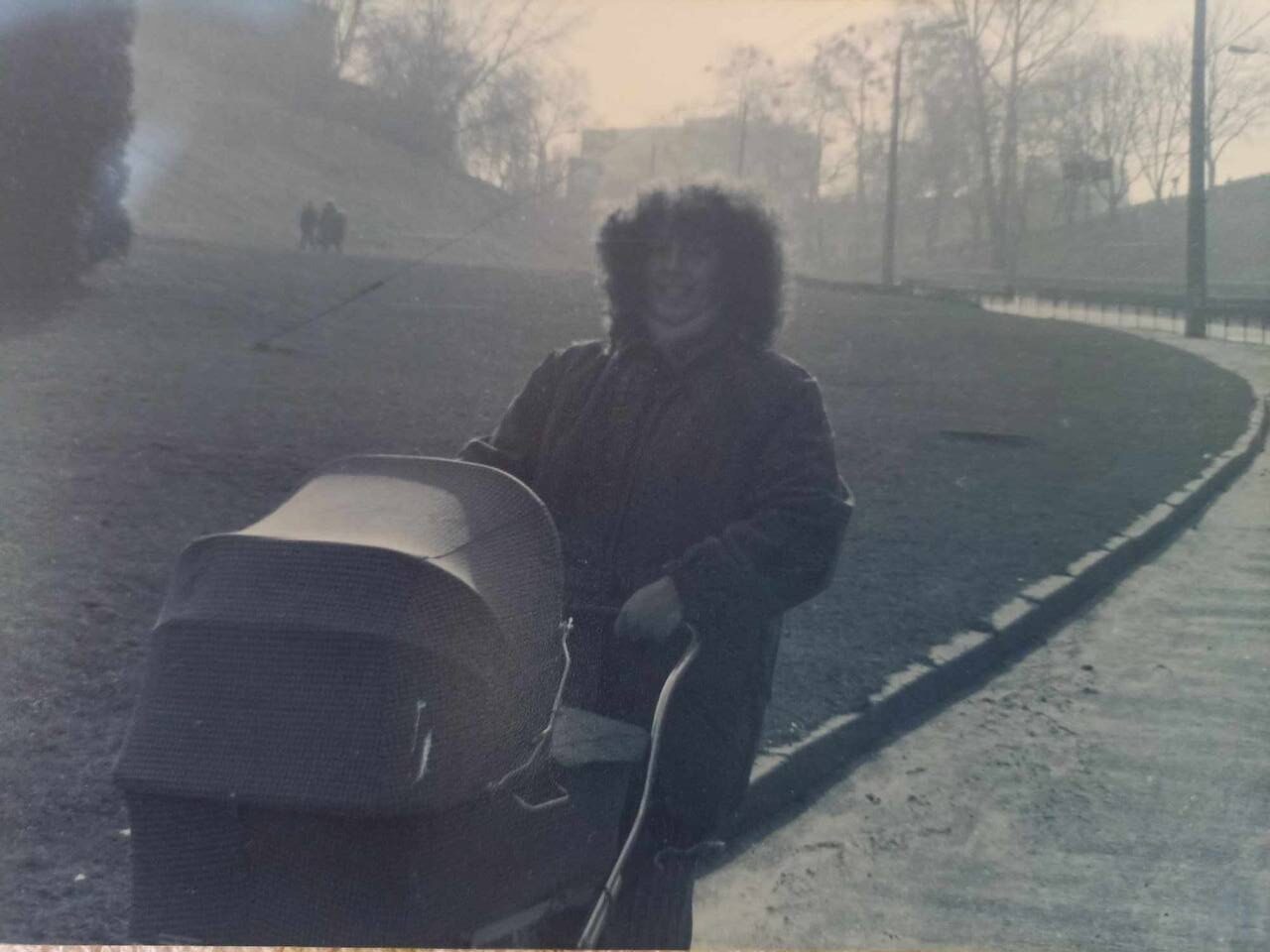
C. Sedimentation of the experience
The greatest achievement of the above examples of the unsuccessful application of art in Ukraine is the important state of affairs that art, which does not make use of existential memory and relies mainly on active memory with its rational strategies, quickly falls into the category of ideological mechanisms, where, due to its apparent universality of events, the neutralization of unique situations takes place. The Russian Empire and the Soviet Union developed strategies of ideological substitution of life situations, which was facilitated by the correspondent ideology. The main motto of art in such a situation is to deny reality as the source of all problems for life. And conversely, to give real life to ideas. Ideas, thoughts, words should differ from feelings, actions and deeds. In this way, people detach themselves from the space in which they exist.
I assume that the Ukrainians have not lost touch with the space in which they live. This sometimes restricts the abstract forms of expression of this experience, which is now being actively made up for. This is why Ukrainians are very sensitive to falseness, unnaturalness, excessive ostentation, in other words, everything that produces superficiality and showmanship. To return to the title of the essay, we can say that the Ukrainian experience is dominated by the problem of its own authenticity, the problem of beginnings, points of reference and the search for institutional forms of its expression.
Translation from Ukrainian by Valeriia Buradzhyieva. Editing by Ada Wordsworth.
Volodymyr Prykhodko (born 1975, Donetsk, Ukraine) teaches at the Faculty of Philosophy at Taras Shevchenko University in Kyiv, where he also completed his doctorate. His academic interests lie in the field of cultural philosophy. He is the academic editor of the Ukrainian translation of Karl Schlögel’s ‘Entscheidung in Kiew: Ukrainische Lektionen’. Volodymyr has lectured at the Mystetskyi Arsenal, PinchukArtCentre and Izolyatsia.
Published 8 September 2024
This text is prepared within the Erasing and Recalling project supported as part of the (re)connection UA 2023/24 programme, which is implemented by the Museum of Contemporary Art (MOCA) NGO and the Ukrainian Emergency Art Fund (UEAF) in partnership with UNESCO and funded through the UNESCO Heritage Emergency Fund.
- The crucial importance of this work is also confirmed by the great attention paid to it by Gilles Deleuze, who outlines a similar project in his work The Logic of Sensation and engages with its predecessor.
2. A 2019 experimental film and art project directed by Ilya Khrzhanovsky, DAU originally conceived as a biopic about Soviet physicist Lev Landau. The project expanded into a vast, immersive experience where participants lived in a recreated Soviet scientific institute for several years, fully in character.
3. Ukrainian and Russian for ‘dustpan’, used as a pejorative for the Soviet Union, as well as for the Soviet way of life and mentality.
4. The Babyn Yar Memorial Center is a museum and educational institution dedicated to commemorating the Babyn Yar massacre, one of the largest mass shootings of the Holocaust. The memorial is located in Kyiv, Ukraine, and marks the ravine where Nazi troops and local collaborators murdered nearly 34,000 Jewish men, women and children over the course of two days in September 1941. The massacre continued with the execution of at least seventy thousand more people, including Roma, Soviet prisoners of war and Ukrainian nationalists. The Memorial Center seeks to preserve the memory of these events through a combination of historical documentation, educational programs and artistic installations.
